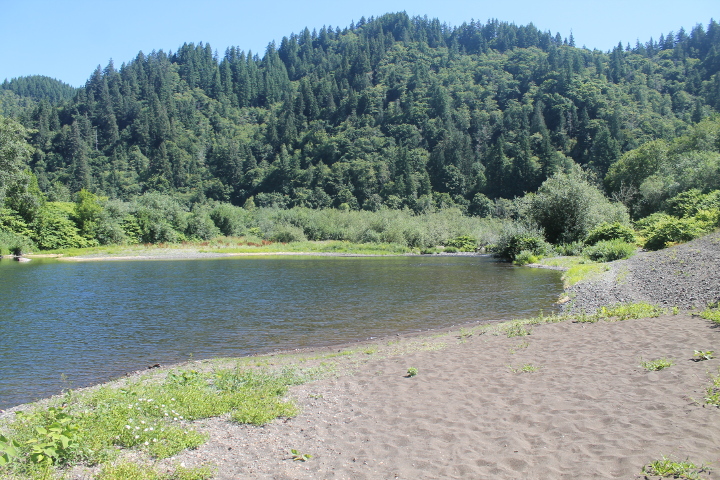Environmental science and its regulation are very complicated. It is important for environmental permit holders to understand both and how their business fit into the natural environments in which they operate.
In these times of climate change and weather event uncertainties being prepared to quickly adapt is vital for your future success. These posts will help you be better positioned to sustain your position and business.
-
Regulatory Data Models
Categories: Estimated reading time: 2 minutes
Natural resource companies do not object to environmental regulations that are consistent and support predictability. Consistency and predictability are critical for decision making under conditions of uncertainty. Natural ecosystems are inherently variable across a broad range of temporal and spatial scales; climate change, drought, and societal desires for sustainability make people more aware of this variability. The science used for development and enforcement of environmental regulations has not kept pace with developments in ecological theory and the analytical tools capable of describing, characterizing, classifying, and predicting natural ecosystems as well as distinguishing natural variability from anthropogenic changes. -
Sediment Sampling Analysis
Categories: Estimated reading time: 1 minutes
Collecting sediment samples for analysis of contaminants–particularly in river systems–is not just a matter of going out with a bucket and shovel. In fact, it is much more complex than a water quality survey, aquatic biota survey, or any terrestrial sampling program. Monitoring of sediment contaminants frequently is done to determine whether the sediments are a sink or a source of the chemicals of interest, and to evaluate the effects of the contaminants on the aquatic ecosystem as a whole. -
Addressing Regulatory Science Uncertainties
Categories: Estimated reading time: 2 minutes
Environmental regulations are supposed to be based on sound science, yet too often either that science is not presented or is deemed insuffiient by permit applicants and others. The result can be administrative appeals and legal challenges that increase time and costs for the applicant and indecision by regulatory agency staff. At their core, all environmental regulations ask three questions to assess compliance with the relevant law or statute: Will the permitted activity adversely effect the natural environment (forecasting)? -
Riparian Zones and Buffers
Categories: Estimated reading time: 2 minutes
Ecologists have determined that landscape edges – boundaries separating one type from another – have higher biological diversity and productivity than do the areas on either side of them. These transition zones are important to animals: mammals, birds, reptiles, insects, and fish. In terrestrial ecosystems edges are found between woodlands and grasslands and between forests and meadows. In aquatic ecosystems the edges are stream and river banks and pond and lake shores; the edges separating aquatic and terrestrial ecosystems are called riparian zones. -
Establishing Environmental Context for Water Quality Monitoring Data
Estimated reading time: 3 minutes
Water quality permit compliance monitoring data with concentration values exceeding statutory thresholds are assumed to result from permitted operations. Fines or penalties might be levied; remedial actions might be imposed. That permitted activities were responsible has not been demonstrated by the submitted data. This is particularly true when permitted activities are dispersed as mining, logging, and agriculture are. Missing in permit compliance monitoring report evaluations is the context for those constituent values that exceeded thresholds. -
Avoid, Minimize, or Mitigate: The Value of Environmental Data
Estimated reading time: 4 minutes
Regulators require collection and submission of baseline data prior to permit issuance (e.g., NEPA documents or other operating permits), and continuing data to evaluate compliance with permit conditions. The reason is the need to determine whether the proposed project might have unacceptable environmental impacts, and whether operations have such impacts. It is common for analyses accompanying reported data to be inappropriate or superficial and not answer two critical questions. Why do observations and measurements have the values they do? -
Spatial Patterns Support Sound Environmental Decisions
Estimated reading time: 3 minutes
Everyone recognizes that environmental data have spatial attributes. We are all familiar with GIS-produced maps showing where data were collected in relation to each other and to other variables. However, maps do not provide a critical requirement to objectively make operational decisions, justify environmental policies and regulations, or help finders of fact in litigation reach sound decisions. What maps lack is the quantitative description of patterns and relationships that reflect underlying environmental processes. -
Staying ahead of climate change
Categories: Estimated reading time: 2 minutes
Understanding that complying with all your environmental permit conditions shows regulators that you comply with environmental statutes does not protect you from challenges and litigation is a necessary foundation for sustaining your operations. Permit compliance conditions are minimal and do not reflect the effects of the changing climate on your operations and the environments in which it set. This blog post addresses storm water discharge; NEPA, ESA, TSCA and others have the same needs but a broader scope. -
permit-holders-and-regulators-bridging-the-gap
Categories: Estimated reading time: 2 minutes
It is common for environmental permit holders and regulators to speak past each other and not communicate. This frustrates and angers both sides, yet it is easily avoided. Over the decades I’ve seen the results of such mis-communication and the costs to the permit holder. This blog post will teach you how to effectively communicate with regulators (if you are a permit holder) and with permit holders (if you are a regulator. -
Aquatic Biota Are Compositions
Categories: Estimated reading time: 2 minutes
The Clean Water Act (CWA) declares it is the national goal of water quality to provide for the protection and propagation of fish, shellfish, and wildlife and provide for recreation in and on the water. The US Environmental Protection Agency’s(EPA) historic approach is developing a national chemical criterion for chemical elements. There are so many differences in aquatic ecosystems across the US that a more pragmatic approach uses the aquatic biota – benthic macroinvertebrates – to quantify local community’s variability and response to anthropogenic activities.








